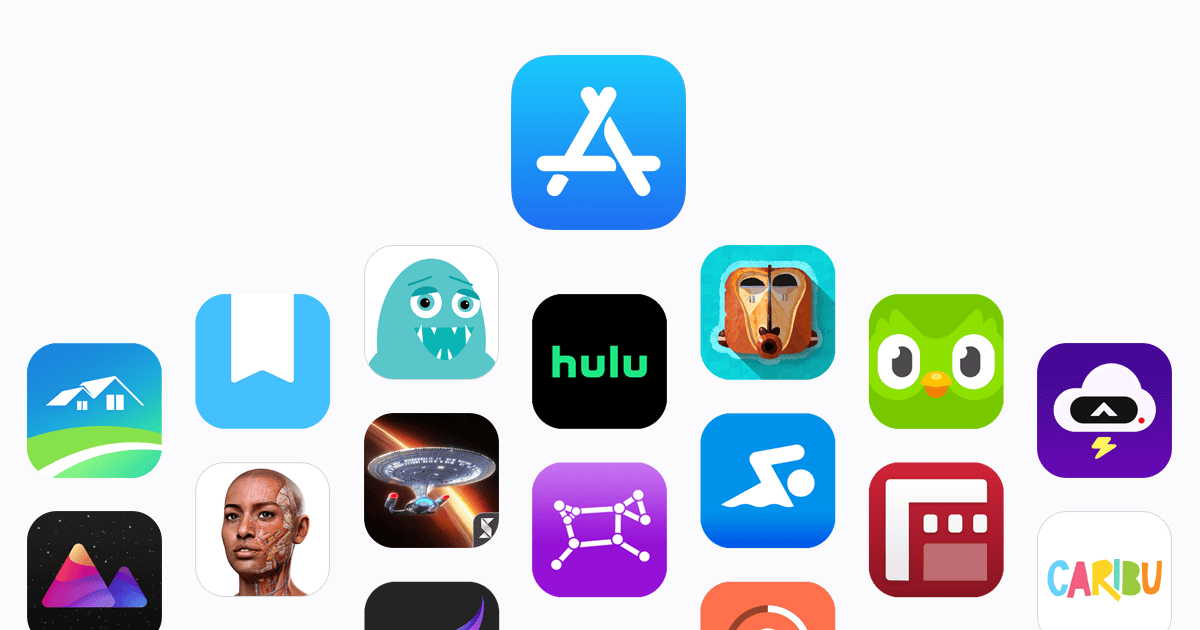Apple’s latest quarterly results tell a compelling story of growth and adaptation, as the tech giant’s services segment has emerged as a leader, compensating for a slight decline in iPhone sales. Apple’s services revenue hit an all-time quarterly high of $24.97 billion, demonstrating the company’s successful diversification strategy.
This remarkable performance in services comes at a crucial time for Apple. While iPhone sales showed modest growth of 5.5%, reaching $46.22 billion, the services segment’s 16% year-over-year increase proved instrumental in boosting overall financial results. The company’s focus on expanding its digital offerings, including Apple Music and Apple TV+, has paid off handsomely.
Despite facing challenges in the smartphone market, Apple’s ability to leverage its vast ecosystem of services has allowed it to maintain strong financial performance. The company’s overall revenue increased by 4%, showcasing its resilience in a competitive tech landscape. This shift towards services not only provides a more stable revenue stream but also deepens customer engagement within the Apple ecosystem.
The Expanding Apple Ecosystem

Services Power Apple’s Growth
Apple’s recent financial performance reveals a compelling narrative: while iPhone sales face headwinds, the company’s services division is experiencing remarkable growth. This shift underscores Apple’s successful diversification strategy and the increasing importance of its ecosystem. Think about it: subscriptions to Apple Music, iCloud storage, and the vast App Store generate recurring revenue, reducing reliance on hardware sales that can fluctuate with market trends. This consistent income stream provides a solid foundation for Apple’s financial health. This article examines the factors driving this growth, explores the future of Apple’s services, and discusses the implications for consumers and the tech industry.
Analyzing Apple’s Service Portfolio
Apple’s services encompass a wide range of offerings, each contributing to the overall ecosystem. Let’s look at some key players:
- App Store: The gateway to millions of apps, the App Store generates substantial revenue through commissions on app sales and in-app purchases.
- Apple Music: A major player in the music streaming arena, Apple Music competes with Spotify and others, offering a vast library of songs and exclusive content.
- iCloud: Cloud storage and syncing services are essential for Apple users, providing backup, file sharing, and cross-device access.
- Apple TV+: Apple’s foray into original content streaming, Apple TV+ offers a growing library of shows and movies, competing in a crowded market.
- Apple Pay: A mobile payment system that allows users to make purchases using their Apple devices, Apple Pay is becoming increasingly integrated into everyday transactions.
- AppleCare: Extended warranties and support services provide customers with peace of mind and contribute to Apple’s revenue stream.
The Future of Apple Services
The future of Apple’s services looks bright. Apple is expected to continue investing in its ecosystem, expanding its offerings and enhancing user experience. Consider these possibilities:
- Expansion into new areas: Rumors suggest Apple’s interest in health-related services, potentially integrating with Apple Watch and other devices for advanced health monitoring. Financial services are another area where Apple could expand, building on the foundation of Apple Card.
- Integration with emerging technologies: As augmented reality (AR) and virtual reality (VR) gain traction, Apple is well-positioned to integrate services with its Vision Pro headset, creating new opportunities for developers and users.
- Focus on user privacy: Apple’s commitment to user privacy could be a key differentiator, attracting customers who are concerned about data security.
Comparing Apple Services with Competitors
The table below compares some of Apple’s key services with their main competitors:
| Service | Apple Offering | Main Competitor(s) | Key Differentiator |
|---|---|---|---|
| Music Streaming | Apple Music | Spotify, Amazon Music | Integration with Apple devices and ecosystem, curated radio stations, lossless audio option. |
| Cloud Storage | iCloud | Google Drive, Dropbox | Seamless integration with Apple devices, focus on privacy, family sharing options. |
| Video Streaming | Apple TV+ | Netflix, Disney+, Amazon Prime Video | Focus on high-quality original content, integration with Apple ecosystem. |
| App Store | App Store | Google Play Store | Curated selection of apps, strong focus on security and privacy, integration with Apple devices. |
The Impact on Consumers
Apple’s expanding services ecosystem offers several benefits to consumers:
- Convenience: Seamless integration across Apple devices simplifies tasks and enhances user experience.
- Value: Bundling services through Apple One can provide cost savings compared to subscribing to individual services.
- Innovation: Apple’s investment in services drives innovation, leading to new features and experiences.
The Broader Tech Landscape
Apple’s success in services has broader implications for the tech industry. It demonstrates the power of the ecosystem model, where hardware and software work together to create a compelling user experience. Other tech companies are likely to follow suit, focusing on building their own service ecosystems to drive growth and customer loyalty.
The Rise of Subscription Models
Apple’s emphasis on services reflects a broader trend in the tech industry: the rise of subscription models. Instead of one-time purchases, consumers are increasingly subscribing to services that provide ongoing value. This model generates recurring revenue for companies and offers users access to a constantly evolving set of features and content. This shift is impacting everything from entertainment to productivity software, and it’s likely to continue shaping the tech landscape in the years to come. The move towards subscriptions also influences how companies approach user engagement and retention, as they must continuously provide value to keep subscribers. This focus benefits consumers by driving innovation and improving user experience.
Apple’s strategic emphasis on its service ecosystem is a significant development. It signals a shift in the company’s business model and has far-reaching implications for the tech industry. As Apple continues to invest in services, consumers can expect more integrated experiences, innovative features, and a growing range of options within the Apple ecosystem.
Key Takeaways
- Apple’s services revenue reached a record high, offsetting slower iPhone growth
- The company’s diversification strategy proves successful in maintaining overall growth
- Apple’s ecosystem of services enhances customer loyalty and financial stability
Performance of Apple’s Segments
The App Store is an important part of Apple’s services. It’s more than just a place to buy apps; it connects developers with millions of users. The App Store succeeds because it selects quality apps, focuses on security and privacy, and works well with Apple devices. For developers, the App Store provides access to a large and engaged audience, making it vital for sharing their apps. However, some people criticize the App Store for its commission fees and how it affects competition. These issues will likely continue to be debated as the App Store changes.
Apple’s latest quarterly results show mixed performance across its business segments. The Services division achieved record-breaking revenue, while hardware sales faced some challenges.
Service Segment Growth
Apple’s Services segment hit an all-time quarterly high of $24.97 billion. This represents an 11% year-over-year increase, adding $6.3 billion to the company’s revenue. The segment’s operating margin remained strong at 74%.
Key drivers of this growth include:
- App Store sales
- Apple Music subscriptions
- iCloud storage plans
- Apple TV+ viewership
- Apple Arcade gaming service
- Apple News+ readership
The number of paid subscriptions across Apple’s services ecosystem continues to expand. This growth helps offset slower performance in other areas of the business.
Hardware Sales Trends
iPhone sales showed modest growth, increasing by 5.5% compared to the previous year. The iPhone 15 series, particularly the Pro and Pro Max models, contributed to this uptick. However, overall smartphone market saturation has led to slower growth rates.
Other hardware segments faced challenges:
- iPad revenue declined
- Wearables sales, including AirPods and Apple Watch, saw a slight dip
The holiday shopping season provided a boost to hardware sales, but not enough to match the stellar performance of the Services segment. Apple continues to focus on innovation in its product lineup to drive future growth in the hardware division.
Innovative Strategies and Market Outlook
Apple’s focus on advanced technologies and service expansion aims to drive growth. The company faces both opportunities and challenges in the evolving tech landscape.
Investing in AI and Advanced Technologies
Apple is ramping up its AI efforts. The company plans to integrate more AI features into iOS 18. These updates will enhance Siri and improve photo editing capabilities. Apple is also working on AI-powered health features for its devices.
The tech giant continues to invest in augmented reality. It is developing AR glasses and improving ARKit for developers. This push into AR could open new revenue streams.
Apple’s custom silicon strategy remains strong. The M-series chips for Macs have been well-received. Future iterations may bring even greater performance gains.
Antitrust Concerns and Financial Health
Apple faces ongoing antitrust scrutiny. The U.S. Department of Justice filed a lawsuit against the company in March 2024. The suit alleges Apple maintains an iPhone monopoly through restrictive practices.
Despite legal challenges, Apple’s financial position remains robust. The company reported record Services revenue of $23.1 billion in Q1 2025. This segment includes App Store, Apple Music, and iCloud.
Apple’s large installed base of over 2 billion active devices fuels Services growth. The company aims to monetize this user base through new offerings like Apple Pay Later and expanded advertising.
Analysts project steady revenue growth for Apple in fiscal year 2025. The consensus estimate is $426 billion, up 6% year-over-year. iPhone sales may face headwinds, but Services and Wearables could offset any slowdown.
Frequently Asked Questions
Apple’s recent quarterly results show strong performance in services, offsetting a dip in iPhone sales. This shift highlights the company’s evolving revenue streams and market strategy.
What factors contributed to Apple’s strong services performance in the recent quarter?
Apple’s services segment hit record revenue of $24.2 billion. The growth stems from increased subscriptions to Apple Music, Apple TV+, and iCloud. App Store sales also played a key role in boosting service revenue.
How have Apple’s services helped offset potential losses from iPhone sales?
Services revenue grew 16% year-over-year, counterbalancing the 1% decline in iPhone sales. This diversification helps Apple maintain overall growth despite fluctuations in hardware sales.
What are the implications of Apple’s latest earnings report for investors?
The report shows Apple’s resilience in changing market conditions. Strong services performance suggests a stable revenue source. Investors may view this as a positive sign for long-term growth potential.
Which Apple services are experiencing the most growth and why?
Apple Music and Apple TV+ are seeing significant growth. The expansion of content libraries and competitive pricing drive this trend. iCloud’s growth relates to increased digital storage needs among users.
How does the dip in iPhone sales compare to the overall trend in smartphone sales?
The 1% decrease in iPhone sales is less severe than broader smartphone market trends. Global smartphone sales have declined more steeply. Apple’s brand strength helps maintain relatively stable sales.
What are the expected trends for Apple’s financial performance in the upcoming quarters?
Analysts predict continued growth in services revenue. iPhone sales may stabilize with new model releases. Mac and iPad sales could fluctuate based on product refresh cycles and market demand.







